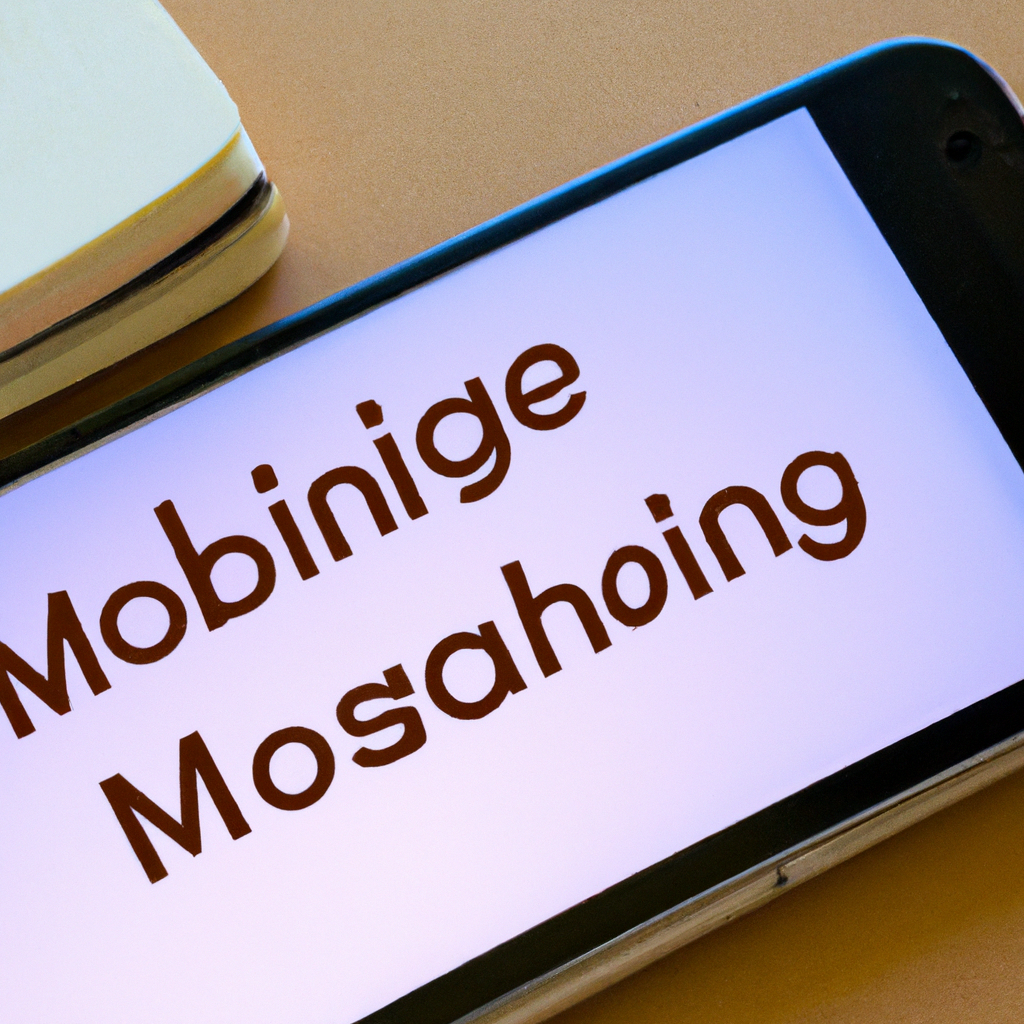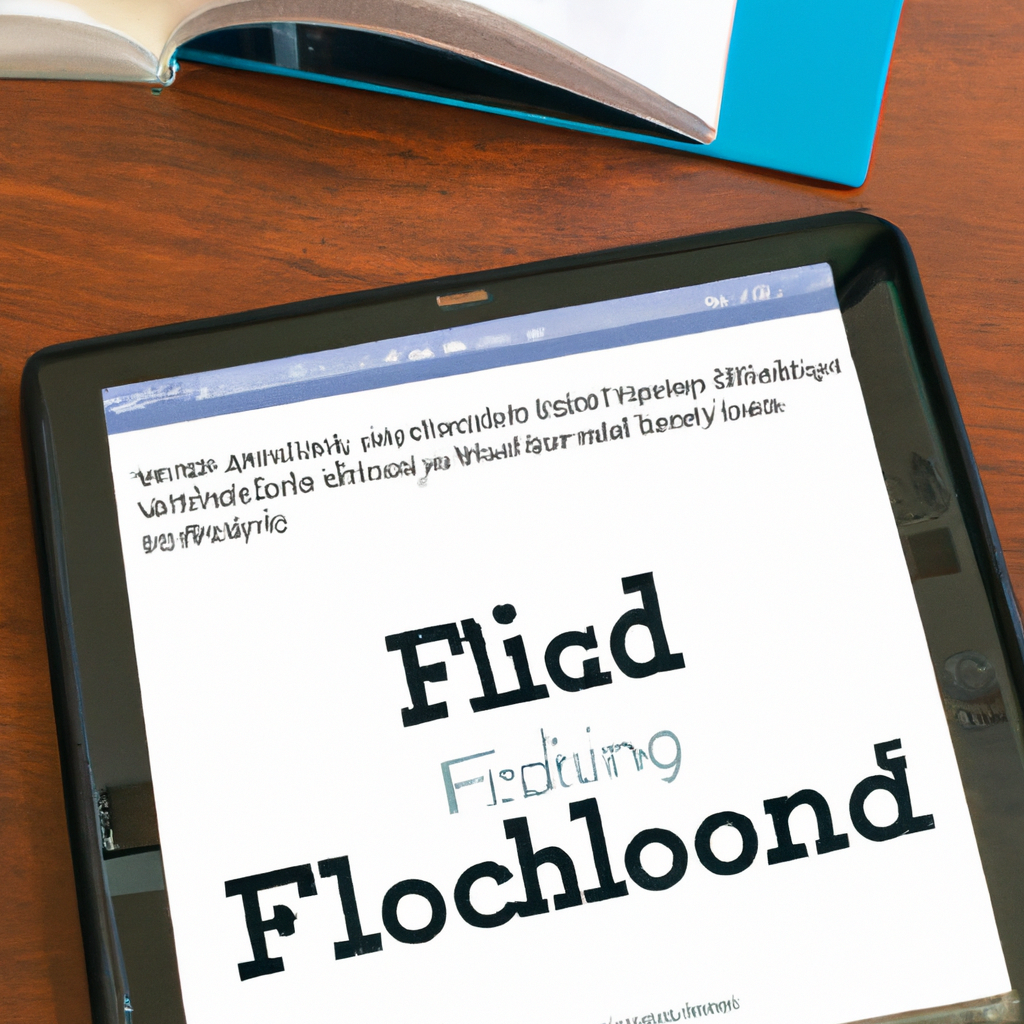In a world where knowledge is a few swipes away, education is no longer confined to the four walls of a classroom. With the advancement of technology, learning has embraced mobility, enabling the pursuit of knowledge anytime, anywhere. Enter the realm of mobile learning, where education effortlessly keeps pace with the fast-paced rhythm of modern life. In this article, we delve into the wonders of education on the go with smart devices, exploring the endless possibilities and remarkable benefits this revolution offers. So buckle up, dear readers, as we embark on an exhilarating journey into the world of mobile learning, where education takes flight and knowledge becomes mobile.
1. Unleashing the Power of Mobile Learning: Revolutionizing Education with Smart Devices
The integration of smart devices in education has rapidly transformed the way students learn and educators teach. With mobile learning becoming increasingly prevalent, students now have access to a wealth of knowledge at their fingertips. By leveraging the power of smart devices, education has transcended the traditional boundaries of the classroom, opening up a world of possibilities.
Smart devices have revolutionized education in several remarkable ways:
- Accessibility: Mobile learning enables students to access educational resources anytime, anywhere, breaking down barriers and offering a personalized learning experience.
- Interactivity: Through smart devices, students can engage with educational apps and games that make learning fun and interactive, nurturing their curiosity and boosting retention.
- Collaboration: With mobile learning, students can connect with their peers and educators, fostering collaboration, sharing ideas, and promoting active participation in the learning process.
These are just a few examples of how smart devices are transforming education. By harnessing the potential of mobile learning, we can effectively equip students with the tools they need to thrive in a rapidly evolving digital world.
2. From Classroom to Everywhere: Embracing a Seamless Learning Journey with Mobile Technology
Mobile technology has revolutionized the way we learn, transforming the traditional classroom into a limitless space for education. With mobile devices becoming more accessible, students now have the opportunity to embark on a seamless learning journey that transcends the boundaries of the classroom.
One of the key advantages of embracing mobile technology in education is the convenience and flexibility it offers. Students can engage in learning activities anytime, anywhere, reducing the constraints of time and location. Whether it’s studying for exams during a commute or accessing educational resources during a family trip, mobile devices enable continuous learning opportunities. Additionally, the portability of mobile devices allows students to carry their virtual classrooms in their pockets, facilitating the integration of learning materials into their daily lives.
- Collaboration and interaction are greatly enhanced through mobile technology. Students can connect with peers and instructors through online platforms, enabling real-time discussions and exchange of ideas. This fosters a sense of community and expands the learning experience beyond the four walls of a physical classroom.
- Mobile learning apps provide interactive and engaging content, making the learning process more enjoyable and effective. Features such as gamification, multimedia resources, and interactive quizzes help to captivate students’ attention and enhance retention of information.
- Personalized learning experiences can be achieved through mobile technology. With the ability to access a variety of educational materials and resources, students can tailor their learning to their individual needs and preferences, ensuring a more efficient and effective learning journey.
In conclusion, the integration of mobile technology in education has the power to revolutionize the learning experience, providing students with a seamless journey that extends beyond the confines of the traditional classroom. By embracing mobile technology, students can enjoy the convenience and flexibility it offers, while benefiting from enhanced collaboration, interactive content, and personalized learning opportunities.
3. Learn on the Go: Empowering Students with Mobile Learning Opportunities
Mobile learning is revolutionizing the way students acquire knowledge and skills. With the power of smartphones and tablets, education is becoming more accessible, engaging, and interactive than ever before. By leveraging mobile learning opportunities, students are no longer confined to traditional classroom settings but can embark on a learning journey wherever and whenever they choose.
One of the key advantages of mobile learning is its flexibility. Students can access educational content on their devices, allowing them to learn at their own pace and on their own terms. Whether they are commuting to school, waiting for an appointment, or simply relaxing at home, students can make the most of their downtime by engaging with educational apps, videos, and interactive quizzes. This flexibility not only makes learning convenient, but it also allows students to take control of their own education, fostering a sense of independence and autonomy.
Moreover, mobile learning provides students with the opportunity to tailor their learning experience to their individual preferences and needs. With a wide range of educational apps to choose from, students can select the ones that best suit their learning style, whether it’s through visual aids, audio lectures, or hands-on simulations. Additionally, mobile learning enables students to explore diverse subjects beyond the confines of their curriculum. They can delve into specific topics of interest, supplement their textbook knowledge, and gain a deeper understanding of the world around them. By embracing mobile learning, students can embark on a learning journey that is personalized, engaging, and boundless.
4. Breaking the Barriers: How Smart Devices are Bridging Educational Gaps
Smart devices have revolutionized the way we access and share information. With their seamless integration into our daily lives, these technological marvels have found their way into the educational sphere to bridge gaps in learning. Through their various features and applications, smart devices bridge the educational divide by:
- Increasing access to educational resources: Smart devices provide a gateway to a vast sea of information, enabling students to explore subjects beyond the confines of their textbooks. Access to online libraries, educational videos, and interactive learning platforms empowers students to expand their knowledge beyond traditional classroom boundaries.
- Promoting personalized learning: The versatility of smart devices allows for tailoring educational content to individual needs. Adaptive learning apps and software can assess a student’s strengths and weaknesses, adapting the curriculum to provide targeted support. This personalized approach fosters a deeper understanding of concepts and encourages students to learn at their own pace.
Furthermore, smart devices facilitate collaborative learning, as they enable seamless communication and engagement among students and educators. This enhanced connectivity allows for:
- Virtual classrooms: Smart devices enable students from different geographical locations to come together in a virtual setting, breaking the barriers of distance. Real-time video conferencing and collaborative platforms create an immersive learning experience where students can interact, exchange ideas, and collaborate on projects irrespective of their physical location.
- Interactive learning: Smart devices offer engaging interactive tools such as educational apps, games, and simulations that make learning more enjoyable and meaningful. These interactive experiences foster student participation and boost their retention of knowledge, transforming the learning process into an exciting adventure.
5. Beyond the Classroom Walls: Mobile Learning Transforms Education Landscape
Mobile learning has revolutionized the education landscape, taking students beyond the confines of the classroom walls and opening up a world of endless possibilities. With the advent of smartphones and tablets, students now have access to a wealth of information and educational resources right at their fingertips.
Gone are the days of lugging around heavy backpacks filled with textbooks. Mobile learning allows students to carry an entire library of knowledge in their pocket. They can access e-books, educational apps, and online resources that cater to their individual learning needs. This flexibility allows students to study at their own pace, reinforcing their understanding of concepts through interactive quizzes and games. Additionally, mobile learning fosters collaboration among students, as they can easily share information, collaborate on group projects, and engage in online discussions.
- Enhanced engagement: Mobile learning provides an interactive and engaging learning experience for students, capturing their attention and sparking their curiosity.
- Self-paced learning: With mobile learning, students have the freedom to learn at their own pace, replaying instructional videos or revisiting materials as needed.
- Accessibility: Mobile devices and the internet have made education more accessible to students around the globe, bridging the gap between those in remote areas and quality education.
- Real-world applications: Mobile learning enables students to connect their classroom knowledge to real-world situations and problem-solving scenarios.
As we bid farewell to this enlightening journey into the world of mobile learning, we are reminded of the immense power held within the grasp of our smart devices. These digital companions, once confined to our pockets, now unlock the gateway to boundless knowledge and education, regardless of time or location.
Through this article, we have discovered the wonders of mobile learning – a concept that has revolutionized education as we know it. In an era where time is scarce and traditional classrooms seem inadequate, the ability to access educational resources on the go has become paramount.
We have witnessed how mobile learning demolishes barriers and levels the playing field, providing equal opportunities for learners worldwide. Irrespective of age, profession, or socioeconomic background, anyone can now engage in self-guided learning, tapping into an expansive realm of knowledge at their fingertips.
In today’s fast-paced world, the benefits of mobile learning are undeniable. With the flexibility to learn at any time and from any location, it serves as a constant companion for eager minds and ambitious souls. Whether you desire to master a new language, delve into the intricacies of coding, or simply expand your general knowledge, mobile learning empowers you to embark on this journey of self-improvement and discovery.
However, as we immerse ourselves further into this digital realm, we must remain mindful of the balance between virtual and physical learning experiences. While mobile learning opens doors to endless possibilities, the power of face-to-face interaction and hands-on teaching should never be underestimated or undervalued.
With smart devices becoming increasingly ingrained in our daily lives, it is imperative that we harness their potential for enhancing education without sacrificing the invaluable bonds created within the traditional classroom. Rather than replace conventional methods, mobile learning should serve as a complementary tool, enriching the educational landscape and fostering a holistic learning experience for all.
So let us embrace this brave new world of mobile learning, where education is no longer confined to the four walls of a classroom. Let us seize the opportunity to expand our horizons, cultivate a hunger for knowledge, and ignite the flame of curiosity within. Together, we can unlock the true potential of education on the go, forever transforming the way we learn and grow.
As we conclude this exploration, we bid you farewell, armed with the knowledge that learning has no boundaries and the power to educate lies within your grasp – quite literally, at your fingertips.











